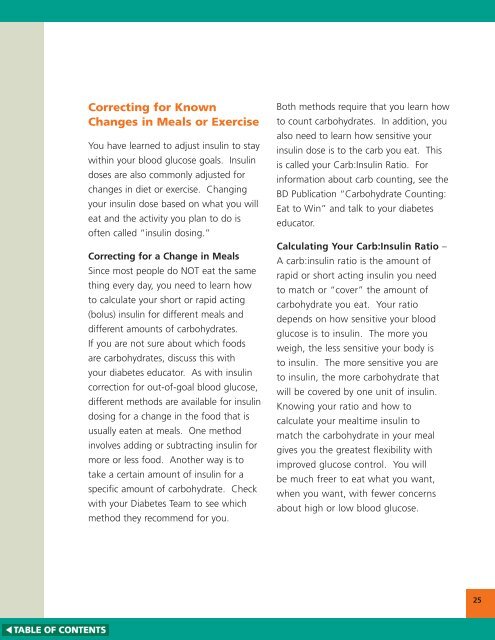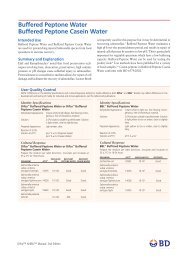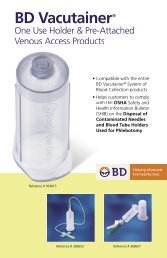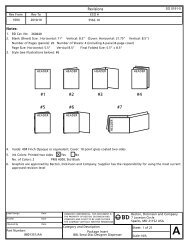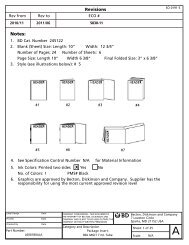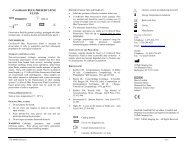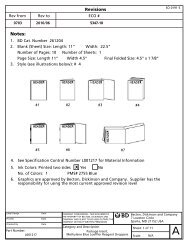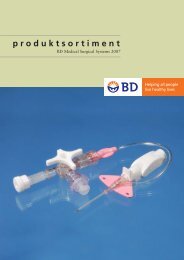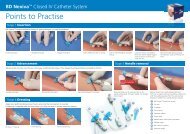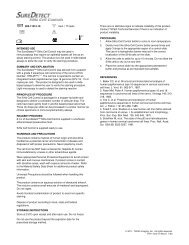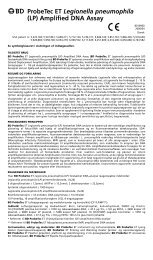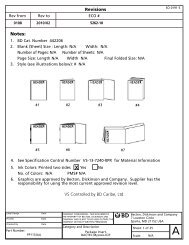Create successful ePaper yourself
Turn your PDF publications into a flip-book with our unique Google optimized e-Paper software.
Correcting for Known<br />
Changes in Meals or Exercise<br />
You have learned to adjust insulin to stay<br />
within your blood glucose goals. <strong>Insulin</strong><br />
doses are also commonly adjusted for<br />
changes in diet or exercise. Changing<br />
your insulin dose based on what you will<br />
eat and the activity you plan to do is<br />
often called “insulin dosing.”<br />
Correcting for a Change in Meals<br />
Since most people do NOT eat the same<br />
thing every day, you need to learn how<br />
to calculate your short or rapid acting<br />
(bolus) insulin for different meals and<br />
different amounts of carbohydrates.<br />
If you are not sure about which foods<br />
are carbohydrates, discuss this with<br />
your diabetes educator. As with insulin<br />
correction for out-of-goal blood glucose,<br />
different methods are available for insulin<br />
dosing for a change in the food that is<br />
usually eaten at meals. One method<br />
involves adding or subtracting insulin for<br />
more or less food. Another way is to<br />
take a certain amount of insulin for a<br />
specific amount of carbohydrate. Check<br />
with your Diabetes Team to see which<br />
method they recommend for you.<br />
Both methods require that you learn how<br />
to count carbohydrates. In addition, you<br />
also need to learn how sensitive your<br />
insulin dose is to the carb you eat. This<br />
is called your Carb:<strong>Insulin</strong> Ratio. For<br />
information about carb counting, see the<br />
<strong>BD</strong> Publication “Carbohydrate Counting:<br />
Eat to Win” and talk to your diabetes<br />
educator.<br />
Calculating Your Carb:<strong>Insulin</strong> Ratio –<br />
A carb:insulin ratio is the amount of<br />
rapid or short acting insulin you need<br />
to match or “cover” the amount of<br />
carbohydrate you eat. Your ratio<br />
depends on how sensitive your blood<br />
glucose is to insulin. The more you<br />
weigh, the less sensitive your body is<br />
to insulin. The more sensitive you are<br />
to insulin, the more carbohydrate that<br />
will be covered by one unit of insulin.<br />
Knowing your ratio and how to<br />
calculate your mealtime insulin to<br />
match the carbohydrate in your meal<br />
gives you the greatest flexibility with<br />
improved glucose control. You will<br />
be much freer to eat what you want,<br />
when you want, with fewer concerns<br />
about high or low blood glucose.<br />
25


